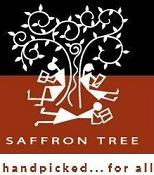Language Development III: For Tulika Book Publishers
Author: utbt15 Mar 2010
Part I here.
Part II here.
Part III here.
What started as a comment reply on Tulika’s blog, discussions on Saffron Tree’s yahoo group and my personal blog, grew and decided to become a blog post. It also ties in with the Language development series I am doing, so here goes it….
There are two components to every language – Language part and the Literacy part.
Language is to talk and understand(when spoken to) a language. Literacy is print awareness in that language – to read and to write.
Typically children are experts in the language part by the time they are three, how is a mystery even to experts, but we are not going to go in to theories now. Then they slowly get the literacy part at around 5-6 years. That is what is developmentally appropriate.
I speak Tamil…or rather used to speak Tamil. In Tamil there is a gap between language and literacy and the gap is widening as we speak. If I think abt it, the gap still existed when I learnt Tamil as a second language. But I was immersed in both spoken Tamil and literate Tamil all the time. One of my early memories – writing my 4th std half yearly exams and delibrately spelling out, ‘nadandhu sendrar'(means ‘he walked’) and wondering we would say ‘nadandhu ponaru’ (also means ‘he walked’, but in spoken form), but while writing this is what we do. So it took me 9 years of my life to figure out that there is a bridge between Tamil language and Tamil literacy. But that was it, I never focused on that difference. After coming to the US, Tamil still persevered, through movies, music and books. Suddenly I look back and find that there are huge gaps.
In the past five years, mainly due to the kids, my external sources of Tamil language and literacy dried out. I haven’t laid my hands on any Tamil magazines/books in the past four years. Watching movies has become such a chore that I have to drink tea to make sure that I don’t doze off and the caffeine has been successful only for the first thirty or so minutes, after that Nithra Devi takes over. Tamil music, though mostly written in English, every couple of years YaadaYaada downloads some Tamil songs in to my laptop that goes in to iTunes and I listen to it in the car during my six minute drive to and from work.
So what about the internal sources? After all I did grow up in Singara Chennai and lived there for the first 22 years of my life! All I can say is, it is tough to keep up if one is not immersed. Plus it is so easy to parent in English. I can say to a child who is trying to claw or hit her sibling, “Well, the way I see it, you have two choices. You can use your hands gently and stay with us and have fun or I am taking you to the bed to clam down”. In English, it just flows, I don’t even have to think and construct the sentence. I dare not attempt it in Tamil.
Now language is something that is very fluid. It changes, grows, evolves, assimilates, gets diluted, adapts and waits for no one to catch up. Tamil language is even more fluid than Tamil literacy. I find that there is a gap not only between my own Tamil language and my own Tamil literacy, but also considering that my Tamil was locked in 1999 and became stagnant, I find gaps between my spoken Tamil and Tamil currently spoken Tamil Nadu.
If I paint the picture of a immigrant who has forgotten her roots, pardon me, I have to point out that I am not alone. One look at the survey results, tells me that even people living in India are in the same boat as me. Over multiple generations, this is the trend I see – my grandparents’ generation with about 20% gap between their spoken and written Tamil, my parents’ generation with about 50% gap spoken and written Tamil, gen-YNOT college kids with 60% difference between spoken and written Tamil and the young school going ones with 75% difference between spoken and written Tamil.
Okay there is a gap. How do we deal with it? What are the challenges I face as a parent? What are the challenges I face as an immigrant parent? What do I do in my classroom as a Tamil teacher? Part IV people.

 (No Ratings Yet)
(No Ratings Yet)
4 Responses for "Language Development III: For Tulika Book Publishers"
Lots of questions in this part. Have sent you email with my thoughts
And for the record, you paint a picture of someone who is very well connected with her roots 🙂
UTBT SAYS: Thanks for your email PV. Sent you a reply.
Really enjoyed reading this:) Looking forward to IV. You just might have given me an idea for the next blogathon theme. Teaching a language, hmmm…
UTBT SAYS: I would definitely add my two cents.
[…] 18 Mar 2010 Part I here. Part II here. Part III here. Part IV here. […]
[…] Contd…. […]
Leave a reply